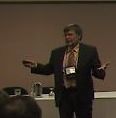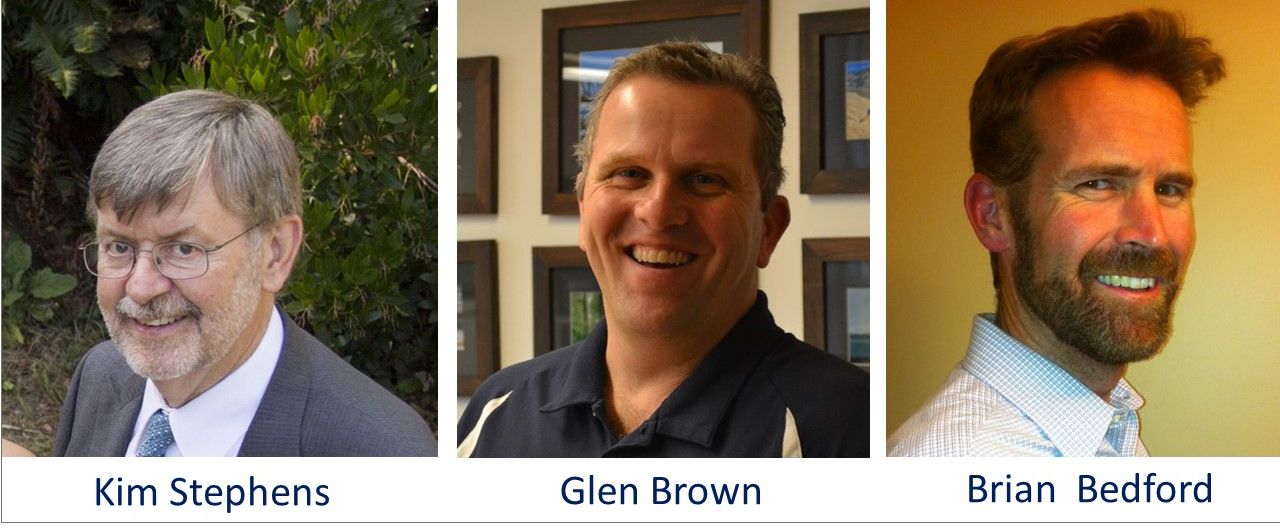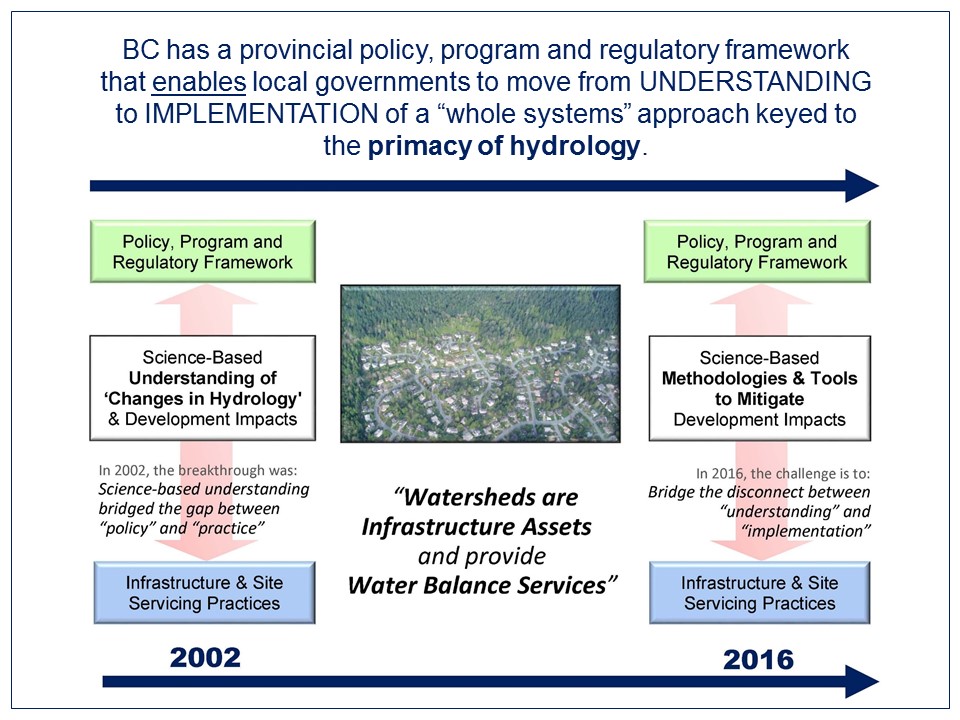Georgia Basin IREI: "Local governments learn from each other and progress through sharing of case study experience," stated Kim Stephens in his presentation to municipal engineers at the Annual APEGBC Conference (Oct 2016)
Note to Reader:
In October 2016, the Association of Professional Engineers and Geoscientists of BC (APEGBC) held its annual conference in Victoria. The executive of the APEGBC Municipal Engineering Division i nvited Kim Stephens, Executive Director with the Partnership for Water Sustainability in BC, to make a presentation on Sustainable Watershed Systems.
nvited Kim Stephens, Executive Director with the Partnership for Water Sustainability in BC, to make a presentation on Sustainable Watershed Systems.
To both preview and generate interest in Kim’s presentation, APEGBC published a feature article in the September-October 2016 issue of Innovation Magazine.
The article was a co-authored effort involving representatives of the Province (Brian Bedford, Director, Infrastructure & Engineering), Union of BC Municipalities (Glen Brown, General Manager, Victoria Operations) and Asset Management BC (Wally Wells, Executive Director).
Nature’s Assets Provide Vital Community Infrastructure Services
“In North America, community asset management traditionally focuses on hard engineered assets—water mains, sanitary and storm sewers, roads, and so on,” wrote Kim Stephens, Brian Bedford and Glen Brown in the Innovation article, with input from Wally Wells.
“Typical community planning and infrastructure servicing practices in the past have led to extensive hard-landscape surfaces within communities that have changed natural drainage within urban watersheds.”
“The results include two extremes: drying creeks, wetlands and aquifers, and flash flooding.”
A Game-Changer
“No longer is asset management only about hard engineered assets,” stated Kim Stephens at the APEGBC Conference.
“Already facing a $200 billion challenge for renewal of hard infrastructure, Asset Management for Sustainable Service Delivery: A BC Framework provides a financial driver for local governments to integrate watershed systems thinking and climate adaptation into asset management.”
“The BC Framework connects directly to asset management requirements for obtaining infrastructure grants – making it a game-changer.”
“Sustainable Watershed Systems, through Asset Management describes a ‘whole-system, water balance’ approach to community development and infrastructure servicing.”
To Learn More:
Download Sustainable Watershed Systems – Nature’s Assets Provide Vital Community Infrastructure Services
Sustainable Watershed Systems,
through Asset Management
“The authors share a commitment to an integrated and whole systems approach to community development and infrastructure servicing,” states Kim Stephens.
“Our hope is that Asset Management for Service Delivery: A BC Framework sets in motion an inter-generational process.”
“That is the nature of the commitment necessary to operationalize coordinated standards of planning, engineering, environmental and financial practice that would ultimately create a legacy for communities, and that is: a Water-Resilient Future.”
Watch the Video on YouTube
Click on the image below to view the presentation by Kim Stephens at the 2016 APEGBC Conference (58 minutes).
Download Create a Legacy: Sustainable Watershed Systems, through Asset Management to view a PDF copy (13 MB) of the complete PowerPoint presentation by Kim Stephens and follow along with the video.
Get It Right & Capitalize on Opportunities
“Restoring hydrologic integrity, and thus the water balance, is key to a water-resilient future,” emphasized Kim Stephens in his remarks to the APEGBC audience.
“In 2002, the initial breakthrough resulted from application of science-based understanding to develop the Water Balance Methodology.”
“This allowed us to bridge what was then a yawning gap between POLICY and PRACTICE. This was a notable milestone in the process of creating a provincial policy, program and regulatory framework that makes possible Sustainable Watershed Systems.”
“Fast forward to 2016, BC is progressing.”
Bridge the Gap Between Understanding and Implementation
“Yet, there are persistent challenges for practitioners to adopt, change or evolve standards of practice,” continued Kim Stephens.
“This means there is still a substantive disconnect (or gap in knowledge translation) between UNDERSTANDING and IMPLEMENTATION.”
“After a decade and a half, a pattern in the local government setting is one of missed opportunities to ‘get it right’ at the time of planning and/or design.”
“Communities must capitalize on, not miss, opportunities. Think and act like a watershed.”
“View each property through a watershed lens. Create cumulative benefits, not cumulative impacts!
“With this mind-set, communities can progress towards Sustainable Watershed Systems, through Asset Management,” concluded Kim Stephens.





